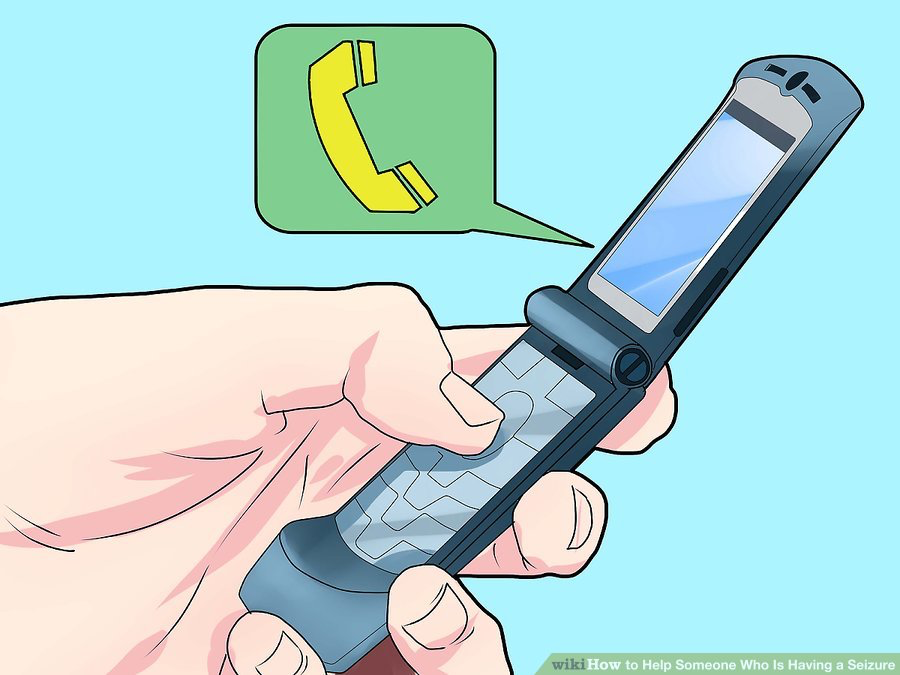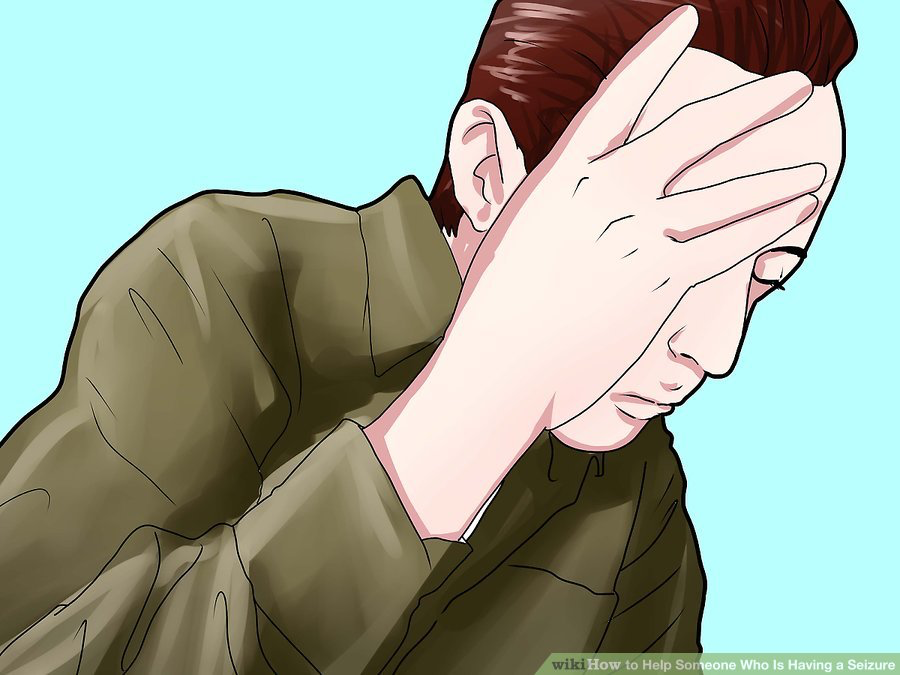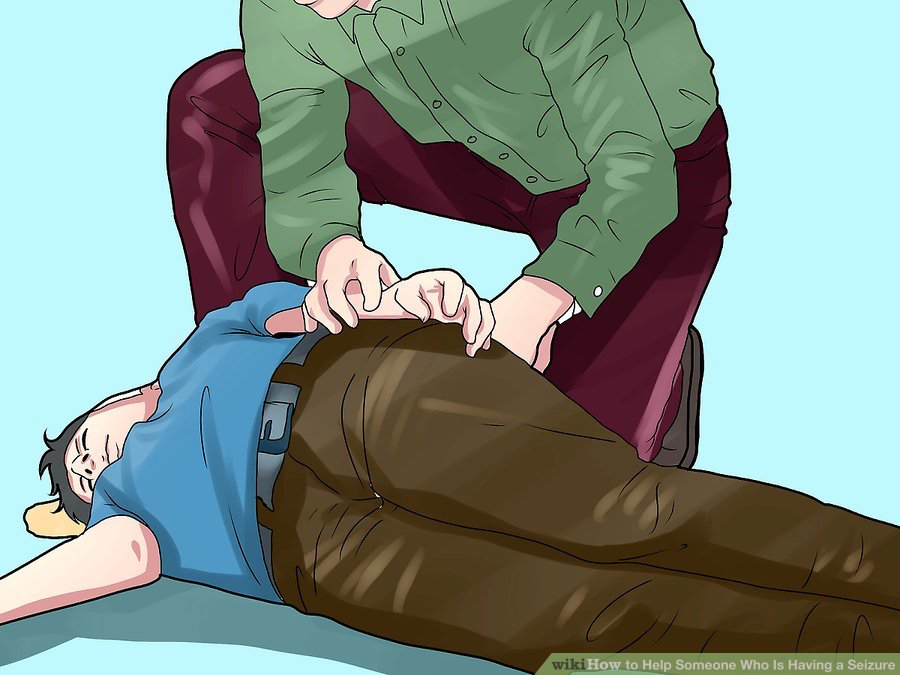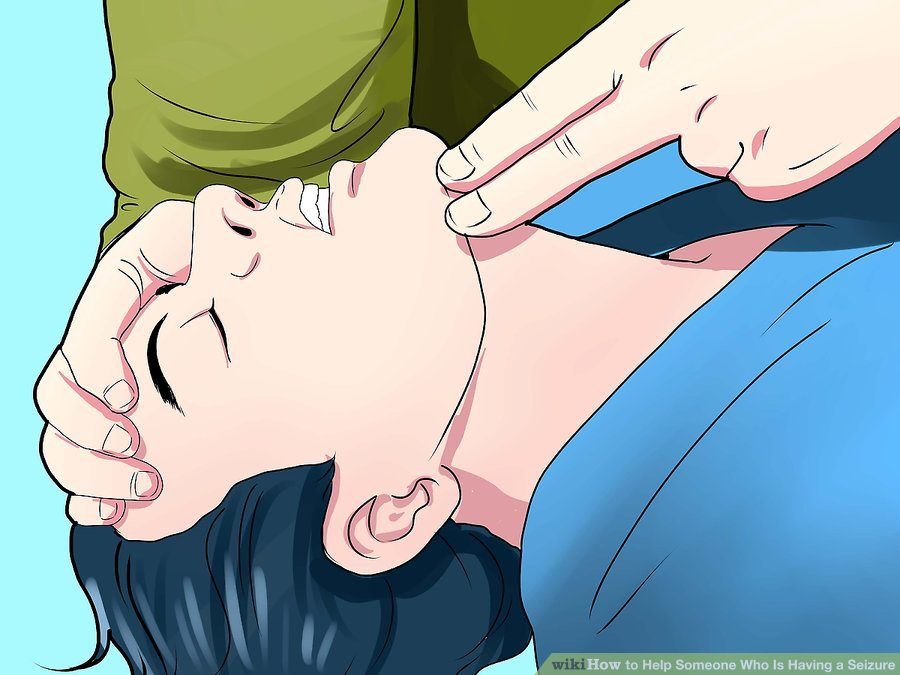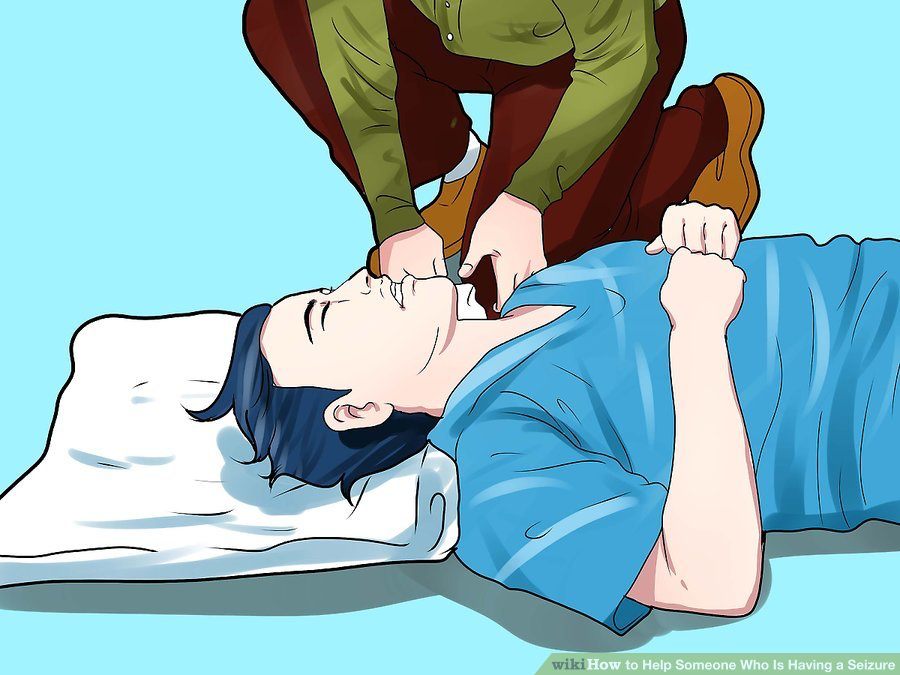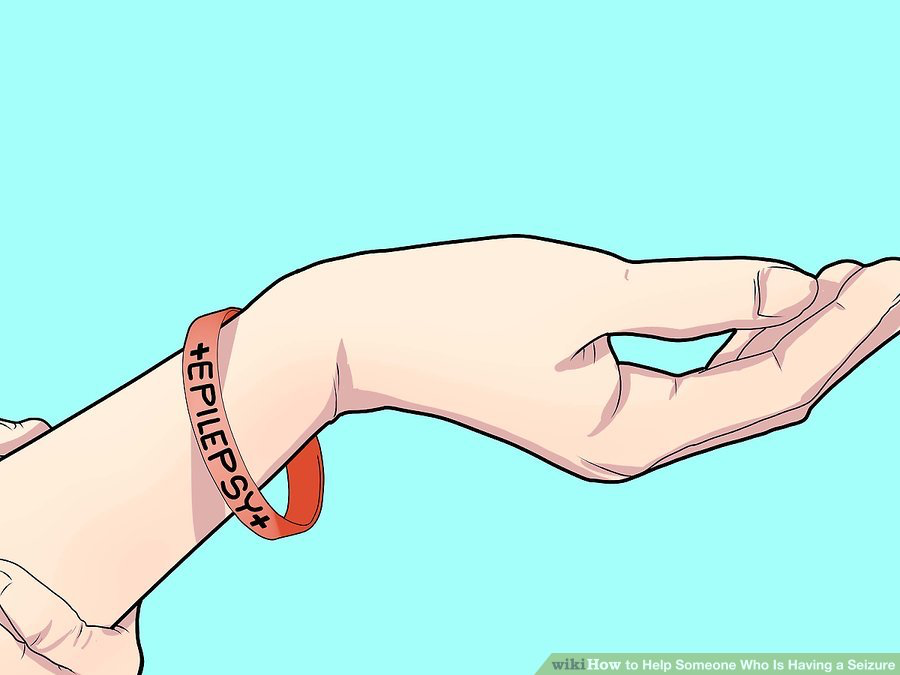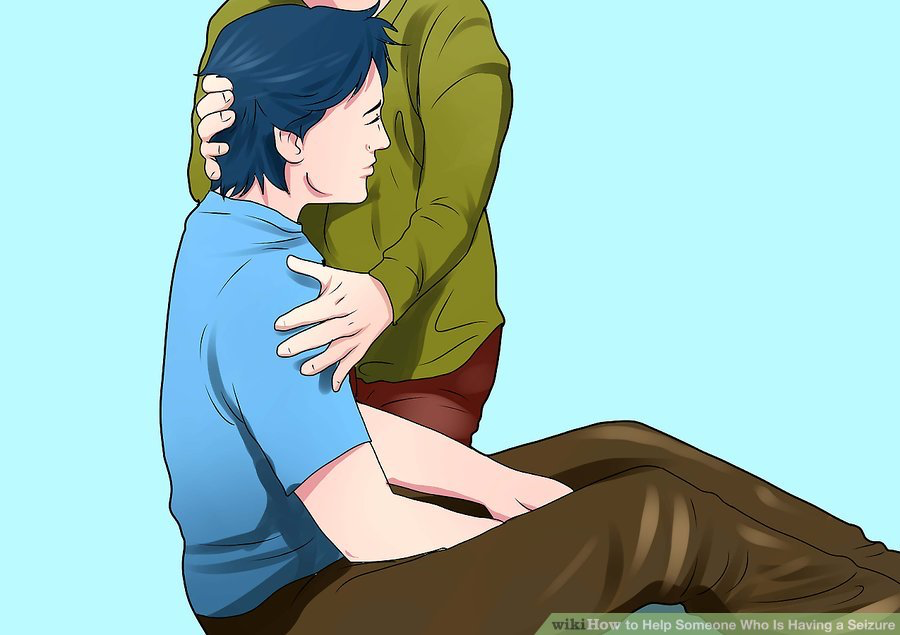Back First Aid Explained
How to Help Someone Who Is Having a Seizure
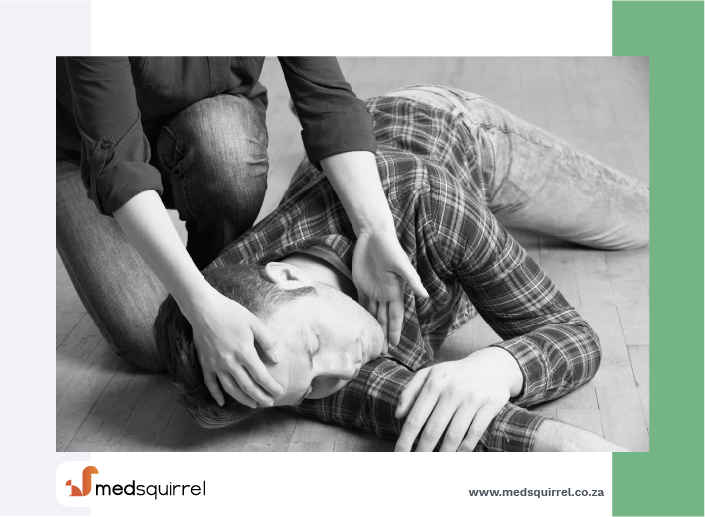
We have selected the following expert medical opinion based on its clarity, reliability and accuracy. Credits: Sourced from the website wikiHow. Please refer to your own medical practitioner for a final perspective, assessment or evaluation.
Overview
When someone is having is seizure, they will often experience involuntary movement, changes in behavior, and awareness for lasting a couple minutes to an hour. If you've never witnessed a seizure, you might be shocked, confused, scared, worried, or all of the above. The most important thing, however, is for you to remain calm.
Steps
1. Know the circumstances under which you should call for emergency medical services
If you are concerned for the person's safety and feel unable to help the person, you should call for emergency medical attention, but in many cases, a person having a seizure will not need emergency assistance. Often, a person will have medication with them. Ask when you can. This is helpful and can be useful to them right away.
Get emergency assistance if:
- The person doesn't have a MedicAlert necklace or bracelet that says "epilepsy" or "seizure".
- The seizure occurred in water.
- A seizure occurs after the person complains of a sudden, severe headache or if it follows a head injury.
- A seizure occurs after inhaling fumes or poison.
- A seizure occurs with other signs of stroke, such as trouble speaking or understanding speech, loss of vision, and inability to move part or all of one side of the body.
- They are pregnant, hurt, or have a necklace or bracelet that says "diabetic".
- The seizure lasts more than 3 minutes.
- A second seizure starts shortly after the first one stops, or if the person has already had a seizure in the past 24 hours.
- The person stops breathing for more than 30 seconds.
- An hour after the seizure stops, the person does not respond normally or suffers from reduced awareness, drowsiness, confusion, nausea or vomiting, fever, or an inability to walk/stand.
(See "EMERGENCY NUMBERS" above)
2. Become familiar with different kinds of seizures
The key to recognizing if a person is having a seizure, and knowing what to do, is to be prepared.
Partial Seizues
Partial seizures affect only part of the brain.
- Simple partial seizures (SPS): The person is awake and aware of what's happening; there could be twitching of one limb, unusual smell or taste, a strange feeling (like "pins and needles") or a sudden intense feeling of fear or joy. The person will usually need gentle reassurance.
- Complex partial seizures (CPS): Consciousness is affected, and the person might wander around, behave strangely, and seem confused. It can last from a few seconds to a few minutes. Don't restrain them, gently guide them away from any dangerous situations (like a busy road), and speak quietly and calmly until they are reoriented.
Primary generalized seizures
Primary generalized seizures are seizures that occur due to a broad electrical discharge in the brain that involves both sides simultaneously.
- Absence or petit mal seizures: The person may look blank and cease to respond to what's going on around them. Stay with them and guide them away from dangerous situations.
- Tonic and Atonic seizures: In a tonic seizure, the person's muscles suddenly get stiff and if they're standing, they might fall backwards. In an atonic seizure, the person's muscles will suddenly relax and they get "floppy" -- they'll often fall forward instead of backwards. Both seizures are brief and sudden, and the person tends to recover quickly.
- Myoclonic seizures are when a person's limb (or part of their limb) starts jerking. These seizures are brief, and they often happen shortly after waking up. They can happen in clusters.
- Tonic clonic (convulsive) or grand mal seizures: The person falls to the ground and makes shaking or jerking movements. Their breathing is affected, they may go blue, and they may bite their tongue. Emergency services should be called as a long grand mal seizure may be life threatening, and may be the first symptom of a severe neurological disorder if the patient does not have epilepsy.
3. Ease the person to the floor so they don't fall
If possible, roll the person onto their side, so that if they vomit, they don't choke on or inhale it. (It is best to roll them onto their left side, however, do not become flustered if you forget this; either side is better than leaving them on their back.)
- Whatever you do, don't ever restrain a person having a seizure, even if they are moving violently. Instead, move any objects that could injure them away from them.
4. Make sure the person is breathing
If their breathing is difficult, check that nothing is blocking their airway, like food. Otherwise, do not insert anything into the person's mouth.
- Although some sources recommend putting a handkerchief or any rolled up fabric between the teeth so that the person doesn't bite his or her tongue, the prevailing advice is that you may do more harm than good by trying to put something (even water, pills, or food) in their mouth.
- You should never place any items into a person's mouth while they are having a seizure since an object may block their airway if dislodged, becoming life-threatening.
5. Help prevent them from hurting themselves
- In grand mal seizures, the person can hit their head against the floor repeatedly. If their head is striking the floor, or some object that you cannot move, you may cushion their head gently with a pillow, cushion, jacket, or any soft object, but do not restrain their head or any other part of their body.
- Loosen any constrictive clothing unless they're jerking too much (ties, belts, shirt collars). If the person is wearing a necklace, unhook it if you can.
- A cold wet cloth on the forehead may help. If the person is wearing a hair clip, remove it.
- Move furniture and other obstacles out of the way -- anything that they might bump into, or that might fall onto them. Keep an eye out for sharp cornered items, or things that will shatter into sharp edges when broken.
6. Check for any kind of ID card or medical jewelry
7. Monitor the person's condition until they regain consciousness
- It will be nice for the victim to get privacy - urge people to move on and stop staring; close the door. This is for the safety of the onlookers, as well as to keep the person having the seizure from feeling embarrassed, vulnerable, or confused.
- The person might have wet themselves; if so, try to hide this to spare any embarrassment.
8. Put the person in the recovery position
Presuming they're on their back and you're at their side:
- Put the arm that's closest to you at a right angle to their body, with the palm facing upwards.
- Lift the other arm across their body and put the back of their hand against their cheek; hold it there.
- Lift the knee that's furthest from you so that their leg is bent and their foot is flat on the floor.
- Pull the bent knee towards you, and the person's body should roll onto their side, keeping your hand against their cheek. The knee should remain bent so that the leg is at a right angle to their body.
9. Write down any details as soon as you get the chance
This can be extremely valuable to the person who had the seizure, as well as to their doctor.
- Part of the body the seizure started in
- Parts of the body affected
- Warning signs before the seizure
- Length of the seizure
- What was the person was doing before and after the seizure?
- Did their mood change?
- Were there any triggers, like tiredness, hunger, or feeling queasy?
- Were there any unusual sensations they spoke of?
- What made you notice that they were having a seizure - a noise? Did they fall? Did their eyes roll? If they fell, did they fall forward, backward, or in some other way?
- Did the person appear "blank" before or during the seizure?
- Did they do anything unusual, like mumble or fiddle with their clothing?
- Did their appearance change, like the color of their face, lips, hands?
- Did their breathing change in any way?
- If at school call parents immediately after it happens.
10. When they come to, stay with them for at least 20 minutes
Reassure them that they are safe. Take the person to a doctor or emergency room if they sustained any injuries during the seizure.
_______________________________________________________________________________________________________________________
Are you a healthcare practitioner who enjoys patient education, interaction and communication?
If so, we invite you to criticise, contribute to or help improve our content. We find that many practicing doctors who regularly communicate with patients develop novel and often highly effective ways to convey complex medical information in a simplified, accurate and compassionate manner.
MedSquirrel is a shared knowledge, collective intelligence digital platform developed to share medical expertise between doctors and patients. We support collaboration, as opposed to competition, between all members of the healthcare profession and are striving towards the provision of peer reviewed, accurate and simplified medical information to patients. Please share your unique communication style, experience and insights with a wider audience of patients, as well as your colleagues, by contributing to our digital platform.
Your contribution will be credited to you and your name, practice and field of interest will be made visible to the world. (Contact us via the orange feed-back button on the right).
Disclaimer:
MedSquirrel is a shared knowledge, collective intelligence digital platform developed to share medical knowledge between doctors and patients. If you are a healthcare practitioner, we invite you to criticise, contribute or help improve our content. We support collaboration among all members of the healthcare profession since we strive for the provision of world-class, peer-reviewed, accurate and transparent medical information.
MedSquirrel should not be used for diagnosis, treatment or prescription. Always refer any questions about diagnosis, treatment or prescription to your Doctor.

